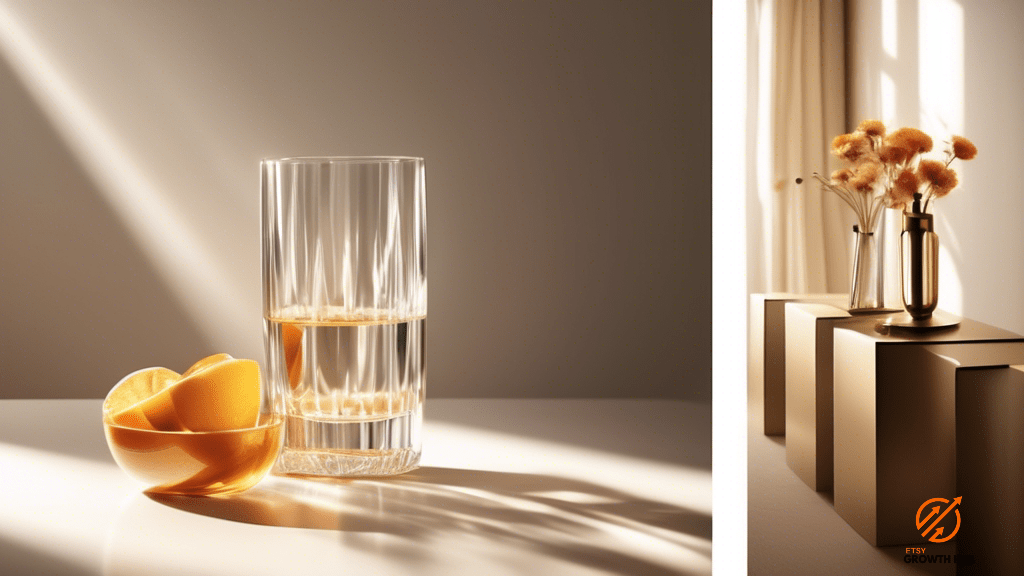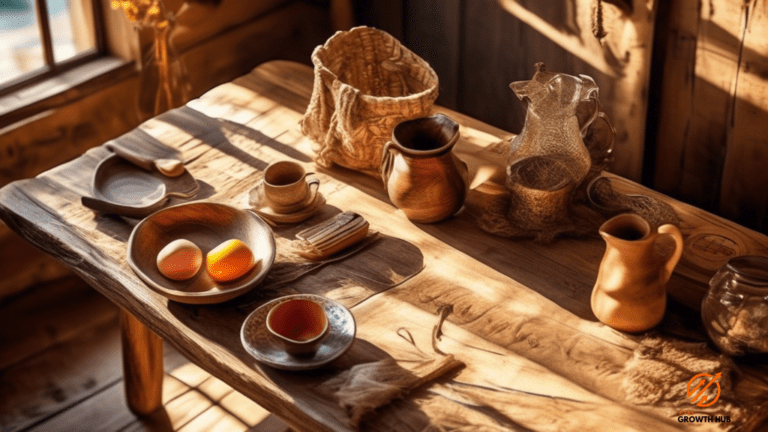Are you ready to take your product photography to the next level? If you want to stand out in a crowded marketplace and make a lasting impression on your customers, it’s time to step up your game with professional product photography.
In this article, we will guide you through the process of creating high-quality product photos that showcase your products in the best possible light.
First and foremost, it’s important to understand the significance of high-quality product photos. In today’s digital world, where consumers rely heavily on online shopping, the visual appeal of your products can make or break a sale. With professional product photography, you can capture the attention of potential customers, highlight the unique features of your products, and ultimately increase sales.
So, if you’re ready to leave amateurish snapshots behind and take your product photography skills to the next level, read on to discover the essential steps you need to follow.
Key Takeaways
- High-quality product photos are crucial for increasing sales and making a lasting impression on customers.
- Professional product photography builds trust and credibility with customers, setting your brand apart from competitors.
- Setting up a professional photography studio with the right equipment and lighting can elevate your product photography.
- Mastering composition, styling, and editing techniques can enhance the overall appeal and quality of your product photos.
The Importance of High-Quality Product Photos
If you want to increase your sales, you need to step up your game and invest in high-quality product photos.
Did you know that 93% of consumers consider the visual appearance of a product to be the most important factor in their purchasing decision?
In today’s highly digital and visual world, it is crucial to have attractive and compelling product photos that grab the attention of your potential customers.
When people are browsing online, they rely heavily on product images to assess the quality, features, and overall appeal of a product.
If your product photos are blurry, poorly lit, or unprofessional, it gives the impression that your business is untrustworthy and your products are of low quality.
On the other hand, high-quality product photos can help build trust and credibility with your audience, making them more likely to make a purchase.
Investing in professional product photography can have a significant impact on your sales and overall business success.
When your products are visually appealing and presented in the best possible way, it creates a positive first impression and increases the perceived value of your products.
High-quality product photos can showcase the unique features, details, and craftsmanship of your products, allowing customers to make a more informed purchasing decision.
Additionally, professional product photography can help differentiate your brand from competitors and make your products stand out in a crowded marketplace.
By investing in high-quality product photos, you are investing in the success of your business and ensuring that you are putting your best foot forward in attracting and converting customers.
So, if you want to increase your sales and take your business to the next level, it’s time to step up your game with professional product photography.
Setting Up a Professional Photography Studio
To elevate your photography skills, get ready to transform any space into a professional studio. Setting up a dedicated photography studio will not only improve the quality of your product photos but also give you more control over the lighting, background, and overall composition of your shots. Here are some key elements to consider when setting up your own professional photography studio:
| Equipment | Lighting | Background |
|---|---|---|
| Invest in a good camera and lens that are suitable for product photography. | Use a combination of natural light and artificial lighting to achieve the desired effect. | Choose a background that complements your product and enhances its features. |
| Tripods and stands are essential for keeping your camera steady. | Experiment with different lighting setups and modifiers to create the desired mood and highlight the product’s details. | Consider using a seamless backdrop or a simple, clean surface for a professional look. |
| Reflectors and diffusers can help control the light and reduce harsh shadows. | Use light metering to ensure proper exposure and avoid overexposed or underexposed images. | Experiment with different colors and textures to add visual interest to your product photos. |
| Remote triggers or tethering software can help you control the camera from a distance. | Consider using product photography tents or lightboxes for small products to achieve consistent lighting and eliminate reflections. | Make sure the background is clean and free of distractions or clutter. |
| Invest in a good quality tripod to keep your camera steady during long exposures or close-up shots. | Use lighting accessories such as softboxes, umbrellas, and reflectors to control the intensity and direction of the light. | Consider using props or staging elements to showcase your product in a realistic and appealing way. |
By setting up a professional photography studio, you can take your product photography to the next level. With the right equipment, lighting, and background, you can create stunning images that will attract customers and boost your sales. So, don’t wait any longer, start transforming your space into a professional studio and see the difference it makes in your product photography.
Choosing the Right Equipment and Lighting
When it comes to capturing stunning product images, having the right equipment and lighting is key. Investing in high-quality camera gear is essential to achieving professional results.
A DSLR camera with a variety of lenses will give you the flexibility to capture different angles and details of your products. Additionally, having a sturdy tripod will help eliminate camera shake and ensure sharp images.
In terms of lighting, it’s important to have a well-lit setup to showcase your products in the best way possible. Natural light is ideal for product photography, so setting up near a window or using diffused sunlight can produce beautiful results. However, if natural light is not available or consistent, using artificial lighting is the way to go.
Softboxes or umbrellas can help create soft and even lighting, while reflectors can be used to bounce light and fill in shadows. By choosing the right equipment and lighting, you’ll be able to capture professional-looking product images that will impress your audience.
Mastering Composition and Styling
Improve your photography by honing your skills in composition and styling. Composition refers to how elements are arranged within the frame of your photograph, while styling involves the overall aesthetic and presentation of your product. Paying attention to these aspects can greatly enhance the quality and appeal of your product photography.
In composition, there are several key principles to keep in mind. First, consider the rule of thirds. This involves dividing your frame into a 3×3 grid and placing your subject along the gridlines or at the intersection points. This creates a more balanced and visually appealing composition. Additionally, be mindful of the balance of your image. Whether it’s symmetrical or asymmetrical, finding a pleasing balance between elements will create a more harmonious photograph. Another important aspect is the use of leading lines. These are lines within the image that draw the viewer’s eye towards the subject. By strategically placing these lines, you can create a sense of depth and guide the viewer’s attention.
When it comes to styling, think about the overall look and feel you want to convey. Consider the background and props you use. A clean and uncluttered background can help highlight your product, while props can add context and visual interest. Additionally, pay attention to the lighting and color scheme. Lighting can dramatically affect the mood and tone of your photograph, so experiment with different lighting setups to achieve the desired effect. Similarly, choose colors that complement your product and create a cohesive and visually pleasing image. By mastering composition and styling, you can take your product photography to the next level and create images that effectively showcase your products.
Editing and Retouching Techniques
Enhance your skills in editing and retouching techniques to elevate the quality of your product photography. Editing and retouching are essential steps in the product photography process that can make a huge difference in the final outcome of your images. By mastering these techniques, you can enhance the overall appearance of your products, create a consistent and professional look, and make your images more appealing to potential customers.
One important aspect of editing and retouching is color correction. This involves adjusting the colors in your images to ensure they’re accurate and true to life. You can enhance the vibrancy of the colors, correct any color casts or temperature issues, and make sure your products look their best.
Additionally, you can also use editing techniques to remove any distractions or imperfections in your images. This might include removing dust, scratches, or any unwanted elements that may take away from the focus on your products. By paying attention to these details and taking the time to properly edit and retouch your images, you can create stunning product photos that’ll grab the attention of your audience and increase your chances of making a sale.
In conclusion, editing and retouching techniques are crucial for taking your product photography to the next level. By mastering these skills, you can enhance the colors, remove distractions, and create a consistent and professional look for your images. So, take the time to practice and learn these techniques, and you’ll see a significant improvement in the overall quality of your product photography.
Frequently Asked Questions
What are some common mistakes to avoid when photographing products?
When photographing products, avoid these common mistakes: 1) Poor lighting that obscures details, 2) Using the wrong background that distracts from the product, and 3) Failing to showcase the product’s unique features effectively.
How can I make my product photos stand out from the competition?
To make your product photos stand out from the competition, focus on creating a unique visual style, use creative and eye-catching compositions, experiment with different lighting techniques, and always highlight the key features and benefits of your product.
Are there any specific tips for photographing small or intricate products?
When photographing small or intricate products, use a macro lens to capture the details. Adjust the lighting to highlight the textures and use a plain background to make the product stand out.
How can I effectively capture the texture and details of my products in photos?
To effectively capture the texture and details of your products in photos, ensure you have proper lighting to highlight the textures. Use a macro lens to get up close and focus on the intricate details.
What are some creative ways to showcase my products through photography?
Get creative with product photography by using unique angles and lighting to showcase your products. Show them off like a dazzling diamond, capturing attention with the sparkle and brilliance that sets them apart from the competition.
Last Updated: January 22, 2024
Disclosure: We may receive affiliate compensation for some of the links in this article at no additional cost to you if you decide to purchase a product. You can read our affiliate disclosure in our privacy policy.
Kevin Fairbanks is your expert navigator in the world of Etsy business. With a passion for creativity and a deep understanding of the e-commerce landscape, Kevin brings a wealth of knowledge to aspiring and established Etsy sellers alike.
As a seasoned entrepreneur and successful owner of multiple Etsy shops, Kevin knows firsthand the challenges and triumphs of the Etsy marketplace. His journey is one of innovation, perseverance, and a keen eye for market trends, making him an invaluable guide for anyone looking to succeed on Etsy.
Kevin’s expertise extends beyond just shop management; he is adept in areas such as SEO optimization, effective marketing strategies, and financial planning for online businesses. His insights are grounded in real-world experience, offering practical and actionable advice.
Join Kevin as he shares his journey and expertise on Etsy Growth Hub. Whether you’re starting your first Etsy shop or looking to expand your existing business, Kevin’s guidance is designed to help you navigate the complexities of Etsy selling with confidence and creativity.
Stay tuned with Kevin’s latest strategies and tips on Etsy Growth Hub to transform your passion into a thriving online business. His dedication to empowering Etsy sellers is evident in every piece of advice he shares, helping you turn your Etsy dreams into reality.
Verified and Approved by:

Kevin Fairbanks
Head of SEO
Like This Article?
Share with your friends
Table of Contents
Latest Articles
Keep Reading
-
Creating An Effective Social Media Calendar For Your Etsy Shop
Boost your Etsy shop’s visibility and sales with this game-changing strategy! Learn how to create an effective social media calendar for your Etsy shop and start seeing results. Don’t miss out, take action today!
-
Enhancing Customer Service Excellence On Etsy
Learn how to enhance your customer service on Etsy and boost your business! Get expert tips and improve your Etsy customer service today for greater success. Click here now!
-
How To Price Your Handmade Products Competitively
Discover the secrets to competitive pricing for your handmade products and boost your profits. Don’t miss out on our expert tips on how to attract customers and maximize your sales. Take a step towards success today!




